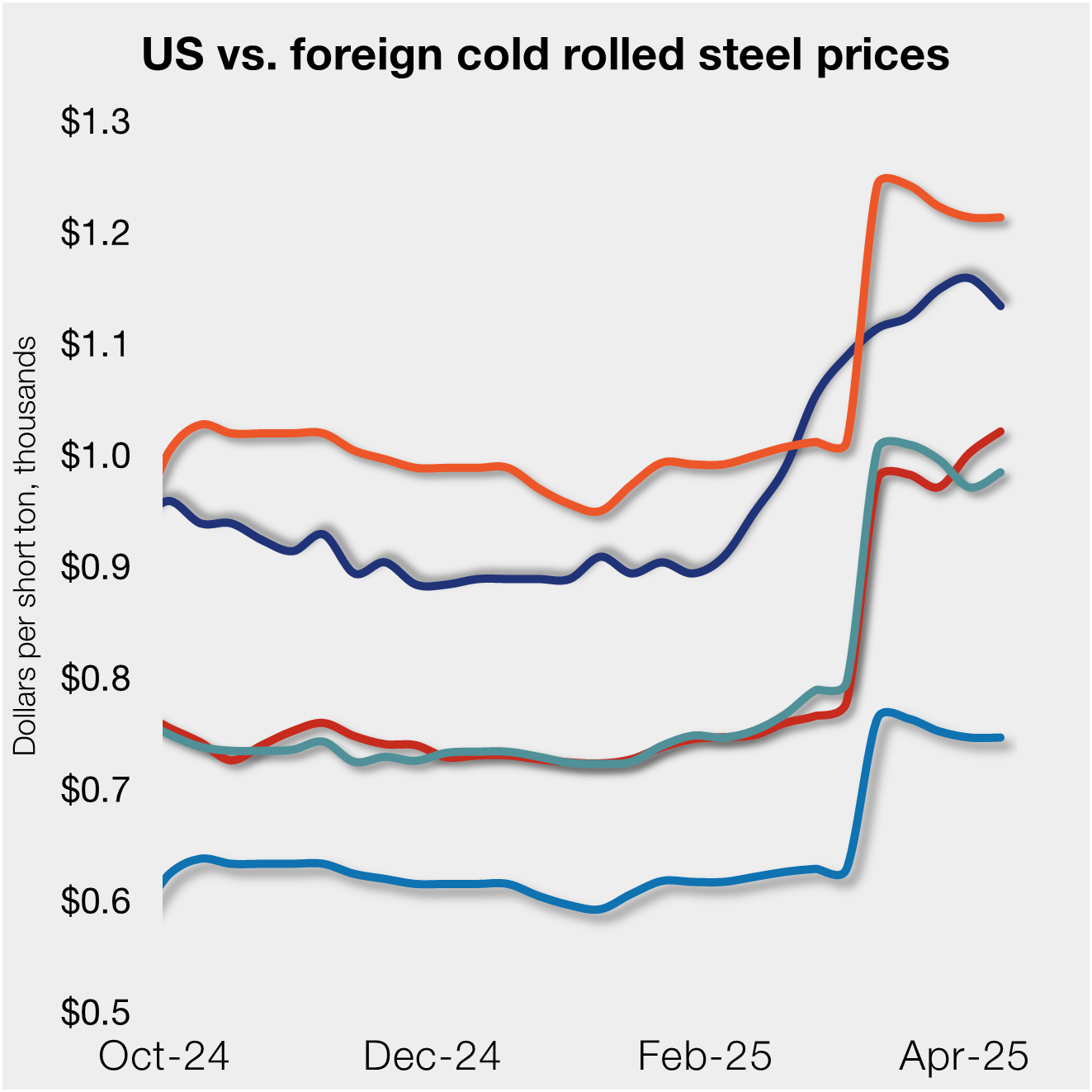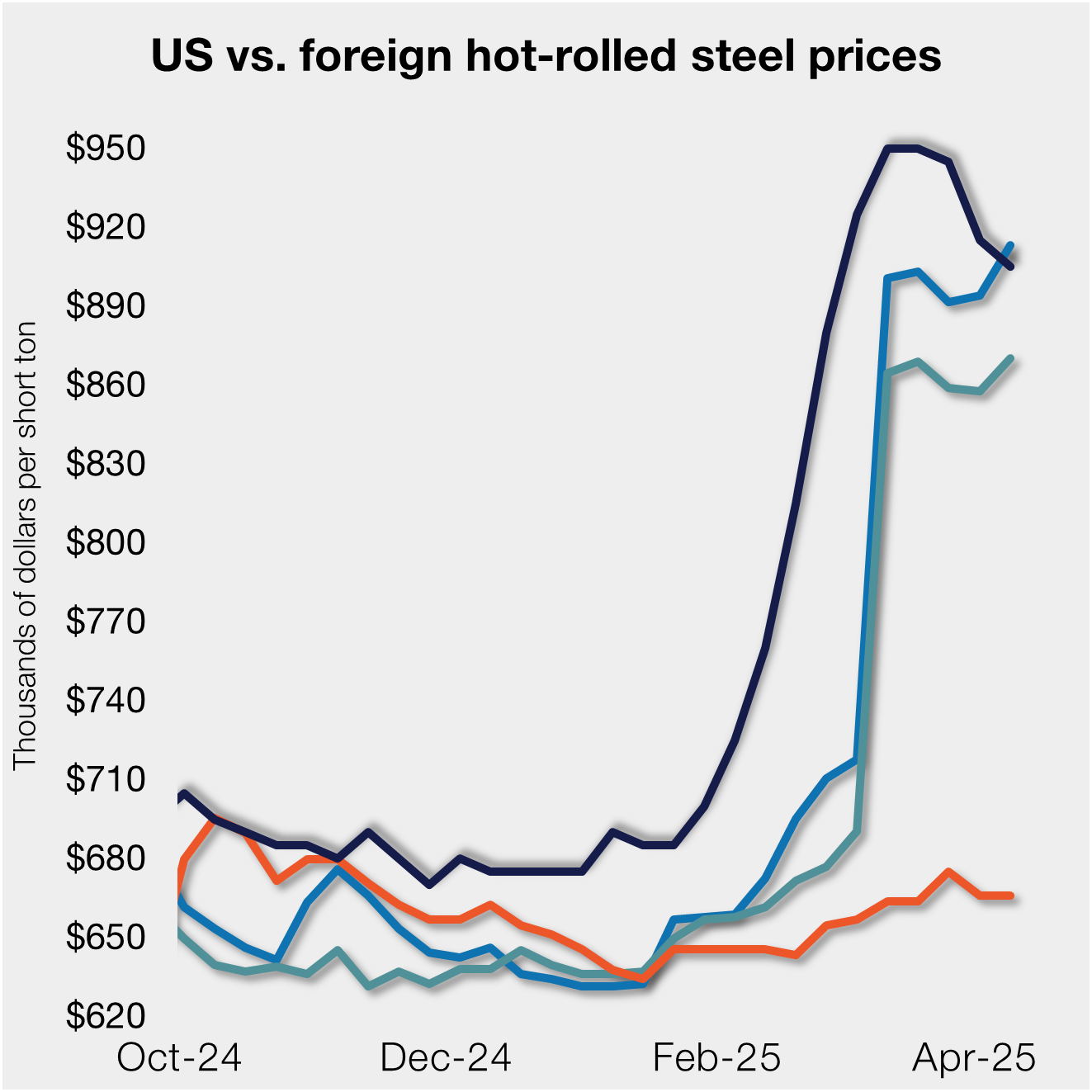Steel Products

Leibowitz on Trade: Update on NAFTA, Section 232 Changes
Written by Tim Triplett
August 30, 2018
Lewis Leibowitz, trade attorney and contributor to Steel Market Update, offers the following commentary on the latest developments in Washington:
I am just back from Atlanta, where I attended the SMU Steel Summit. I was pleased to be able to speak to many steel industry folks concerned about the steel tariffs, the China tariffs and other trade-related matters. While there, the announcement came that the United States and Mexico had reached a tentative agreement on an update to the North American Free Trade Agreement, which President Trump would prefer not to be known (anymore) as NAFTA. As I write, Canada and the U.S. are negotiating to determine whether Canada will also be a signatory to the agreement.
On the steel front, the updated NAFTA (whatever you would like to call it) was overshadowed by a new proclamation issued last night, changing the steel and aluminum “section 232” tariffs regarding product exclusions. The new proclamation, issued late Wednesday, implemented two major changes to the product exclusion regime for steel and aluminum:
- Countries with quotas rather than tariffs (Argentina, Brazil and South Korea, so far) may now receive exclusions. Back in June, Secretary of Commerce Wilbur Ross stated that the Proclamations on steel and aluminum did not permit the Commerce Department to grant product exclusions for material from countries limited by quotas rather than tariffs. (I am not convinced that the original Proclamations contained any such prohibition, by the way).
- U.S. companies that purchased steel products covered by quotas that are developing new industrial projects can, under certain circumstances, receive an exclusion for imported steel products and pay the 25 percent tariff rather than be limited by the quotas, which prevent over-quota merchandise from entering U.S. commerce.
{loadposition reserved_message}
There are a number of details that should be noted in these two changes: First, exclusions from quotas are effective only from the date that the exclusion is granted. Unlike tariffs, under which tariffs are refunded back to the date on which the exclusion request was posted on the regulations.gov website, quota volumes will not be credited back to the quotas for products that are granted an exclusion after the date of entry. However, articles granted an exclusion will not be subject to the tariffs applicable to other countries.
Second, the new Proclamation provides that an exclusion from tariffs (not quotas) will apply to entries for consumption on or after the date of filing of the request, rather than the date it is posted on the regulations.gov website. This provides greater relief than before. The change applies to all entries after the tariffs became effective (for most countries on March 23, 2018), as long as the entries have not been liquidated.
Third, the new quota exclusion procedures will be detailed in new regulations to be published by the Department of Commerce “as soon as practicable.” There are no regulations available as of tonight.
Fourth, the new procedures for quota exclusions for new capital projects have additional requirements. Exclusions will only be granted to U.S. companies that entered into a contract for production and shipment of covered steel products before March 8, 2018; that the contract specifies the quantities of steel products and a shipment schedule; that the steel will be used to construct a facility in the United States; that the payments for the steel constitute 10 percent or less of the cost of the facility under construction; and that lack of relief through product exclusion would “significantly disrupt or delay” completion of the project.
Fifth, this project exclusion applies only to entries on or before March 19, 2019. Any request must be accompanied by a sworn statement signed by the CEO and the chief legal officer of the requesting company, that the request meets all the requirements set forth in the proclamation, that the company will provide accurate reports of the quantities imported to U.S. Customs and Border Protection and that the quantities will not exceed the amounts excluded under Commerce’s decision.
Perspective: Members of Congress have praised the administration for loosening up the product exclusion procedures; the devil, as always, is in the details. There is no language in the Proclamation that deals with objections to exclusion requests. If objections continue to lead to rejections regardless of the nature of the objections or their merits, these reforms will not amount to much. The Proclamation reinforces the language of the original proclamations that exclusions should be granted when domestic product is not “produced in the United States in a sufficient and reasonably available amount or of a satisfactory quality.” This language seems to imply that product that is not made available to steel buyers under reasonable commercial terms (quality, specifications, price and time of delivery) should be eligible for exclusion. If that is the result, the product exclusion process can materially assist steel consumers, especially those without a clear channel to domestic steel producers.
The negotiations with Canada and Mexico also could be significantly affected by the administration of product exclusion requests. A liberal exclusion process could approach the stated ideal of the Mexican government and the Mexican steel industry to resume free and open trade in metals. If the U.S. government determines to replace the 25 percent tariff on steel with quotas, those would be much easier for Canada and Mexico to accept were exclusions approved for U.S. customers reliant on steel and aluminum from those countries. The Proclamation does not provide specific assurances of any such liberalization, however. We will have to wait and see.
Lewis Leibowitz
The Law Office of Lewis E. Leibowitz
1400 16th Street, N.W.
Suite 350
Washington, D.C. 20036
Phone: (202) 776-1142
Fax: (202) 861-2924
Cell: (202) 250-1551

Tim Triplett
Read more from Tim TriplettLatest in Steel Products

CRU tariff webinar replay now available
CRU’s latest webinar replay on how Trump’s tariffs affect the global steel market is now available on our website to all members. After logging in at steelmarketupdate.com, visit the community tab and look under the “previous webinars” section of the dropdown menu. You’ll find not only this special CRU webinar but also all past Community […]

US, offshore CRC prices diverge
US cold-rolled (CR) coil prices declined this week, slipping for the first time since early February. Most offshore markets deviated, moving higher this week.

Construction growth slowed in March on tariff woes: Dodge
The decline comes after reaching a record high in January to kickstart the year.

Return of S232 zapped gap between US and EU HR prices, Asian HR remains cheaper
Domestic hot-rolled (HR) coil prices declined this week for a third straight week. Most offshore markets bucked the trend and gained ground. Uncertainty in the US market around tariffs, especially after “Liberation Day,” caused US prices to slip as buyers moved to the sidelines. It’s unclear to date whether the 90-day pause on the more […]

SMU Steel Demand Index momentum slows further
SMU’s Steel Demand Index growth eased again, according to early April indicators. The slowdown comes after the index reached a four-year high in late February.
